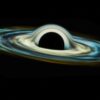⇧ (VIDEO) You might also like this partner content
This May’s spectacular aurora borealis are among the most intense in the past 500 years, according to a NASA study. Unusually, they are visible at unusually low latitudes, such as the southern United States and northern India. The geomagnetic storm that caused them would be comparable to those of 1957 and 2003 in terms of intensity – historical strength, causing auroras as far as southern Europe and Morocco.
Since the beginning of this month, the Sun has been extremely active, with more than 83 moderate to very intense flares recorded to date. Between May 7 and 11, 8 extreme solar flares occurred, the strongest of which was of category X 5.8. They all came from a gigantic, highly active sunspot complex: AR3664. On May 14, the same place erupted
category X8.7, the most powerful in the current solar cycle (25th solar cycle). However, its impacts on Earth were smaller compared to previous large eruptions due to the point’s location.
The resulting coronal mass ejection (CME) began reaching Earth beginning on May 10. In particular, they grouped into a huge wave of charged particles moving at a speed of up to 5 million kilometers per hour. ” All of the CMEs arrived at roughly the same time, and conditions were ideal for creating a truly historic storm », explains ua NASA press release Elizabeth MacDonald, Heliophysics Citizen Science Lead and Space Scientist at the Goddard Space Flight Center.
The resulting geomagnetic storm was primarily a G4, but twice climbed to G5 (the highest level), making it almost comparable to the 1859 Carrington event (the most powerful solar storm in history, which caused auroras as far away as Cuba and Hawaii). . Moreover, (for the recent storm)
the most powerful since 2003.
This caused a temporary weakening of the Earth’s magnetosphere, resulting in auroras visible at extremely low latitudes (down to 26 degrees magnetic latitude). According to NASA, they could rival the most intense and widespread auroras of the last 500 years. ”
This recent storm could match some of the lowest-latitude aurora sightings recorded in the last five centuries, although scientists are still estimating that rank “, wrote those responsible for the study.
The storm was so strong that the National Oceanic and Atmospheric Administration (NOAA) sent warning notices to commercial power and satellite operators to help mitigate potential impacts. This is the first time in nearly two decades that the agency has issued a broad warning, after which NASA placed at least one of its satellites (ICESat-2) in a temporary safe state.
Auroras visible to equatorial regions
In addition to its own observations, NASA also relies on reports fromAurorasaurus, an agency-funded group of amateur or independent researchers who monitor the aurora around the world. These reports are sometimes simply posted on social media or directly on the group’s website. They are then checked by a NASA team, and the images contained are grouped on a map to potentially be integrated into space weather models.
“Cameras – even standard cell phone cameras – are much more sensitive to aurora colors than they were in the past “, explains MacDonald. ”
By collecting photos from around the world, we have a great opportunity to learn more about auroras through citizen science “, she adds. The expert also encourages aurora watchers to continue posting their photos on the Aurorasaurus website.
Reports indicate that the most intense auroras occurred on the evening of May 10. In the Northern Hemisphere, they were visible as far as Florida and Mexico, passing through northern India as well as a large part of Europe (as far south as France). In the southern hemisphere, they have been observed as far as the Galapagos Islands (partially located on the equator) and New Caledonia, via New Zealand and Australia. According to Hisashi Hayakawafrom Japan’s Nagoya University, the last time auroras were observed in these regions was during the Carrington event.
However, the current estimate of aurora intensity lacks detail, NASA experts said. However, the increase in records allows for comparisons spanning several centuries. ” We will study this event for years said Teresa Nieves-Chinchilla, acting director of NASA’s Moon to Mars (M2M) Space Weather Analysis Office. ” This will help us test the limits of our models and understand solar storms “, she says.
Collecting this data will allow better prediction of the potential impacts of solar storms on satellite devices and other space infrastructure, as well as manned space missions. AR3664’s sunspot region is also gradually moving towards Mars (due to the rotation of the Sun), which will allow an assessment of the expected impacts with a view to the future
missions on the planet.

